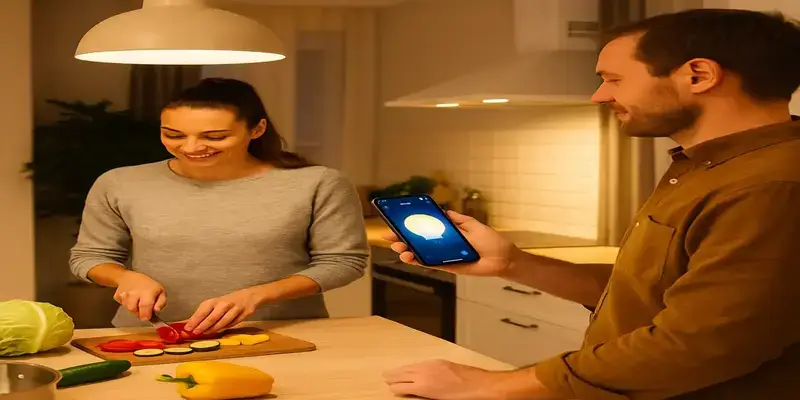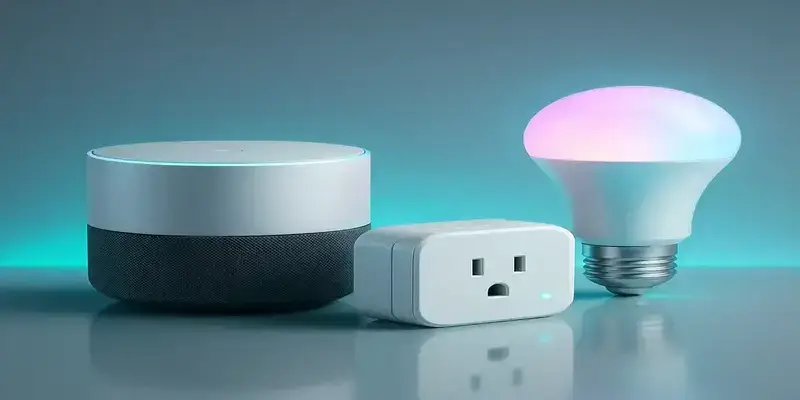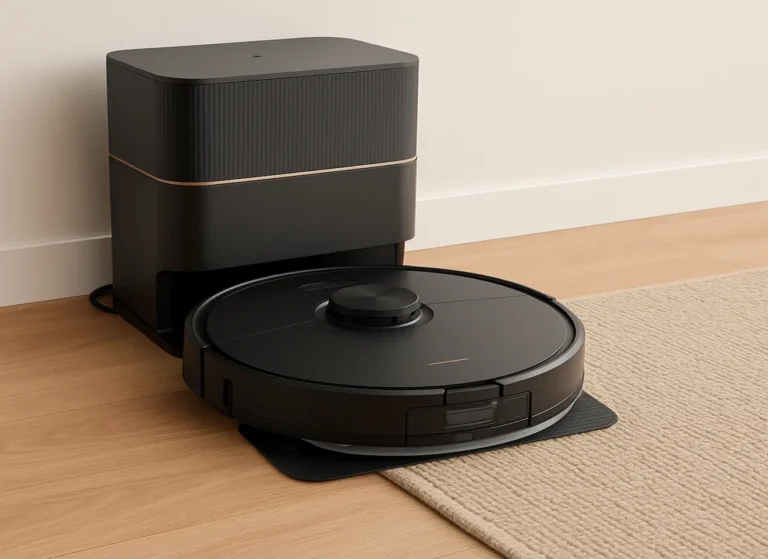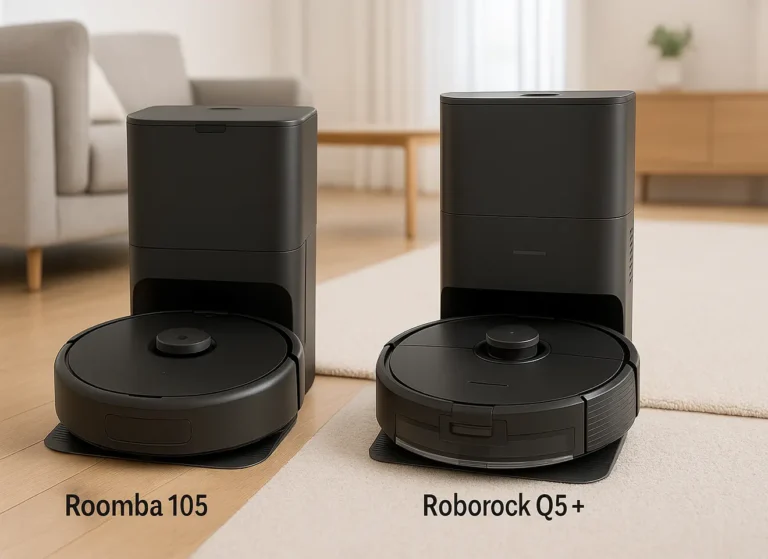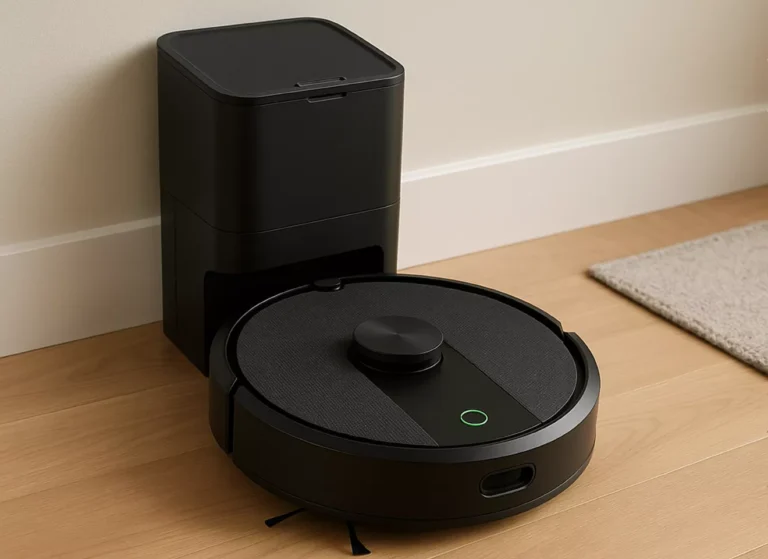Why You Need a Govee Water Leak Detector Under Your Sink (A Renter’s Guide)
Renters don’t need another headache or a landlord lecture. A govee water leak detector three-pack puts coin-size sensors under the sink, by the toilet, and near the washer to catch drips early. Wi-Fi push alerts and a loud local alarm mean you act fast, with zero drilling, reversible setup, and protection for your deposit.
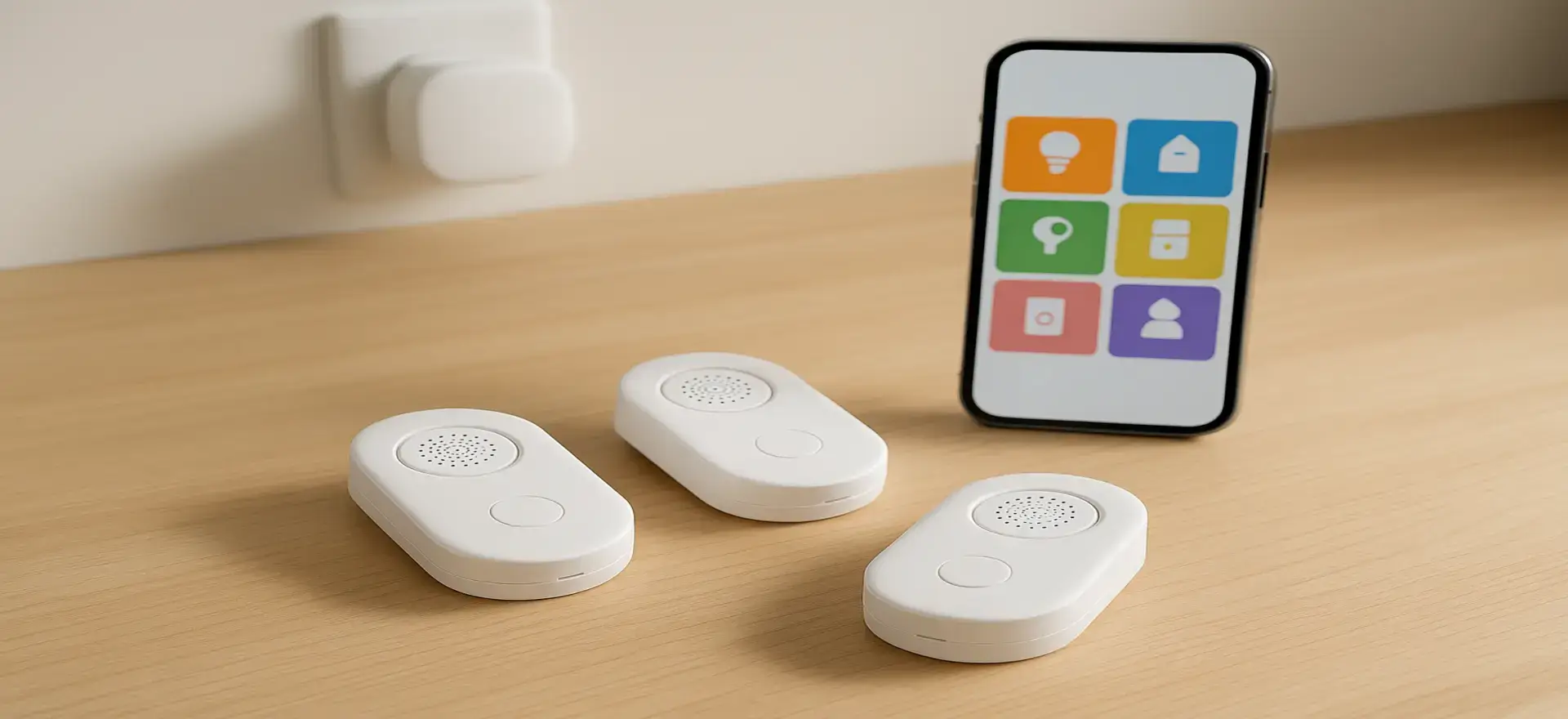

This image has been generated using AI for illustrative purposes only and does not represent an actual product image.
Let’s Talk Like Renters (Why This Matters First)
A slow drip can become mold, tense emails with your landlord, and a slice of your deposit gone. A govee water leak detector gives instant phone alerts, a loud local alarm, and zero-drill setup you can reverse on move-out.
Renters have unique plumbing pain. You didn’t install the pipes, yet you’ll get blamed for damage. The fix is cheap: put a tiny sensor where water would pool first—under the kitchen sink, beside the toilet, near the washer—and let it shout the moment trouble starts.
Let’s Talk Like Renters (Why This Matters First)
What actually goes wrong in apartments
Hidden leaks don’t look like movies. They start as a soft-to-the-touch cabinet base, a faint musty smell, or a thin halo around the toilet. By the time you notice, wood swells and paint blisters.
Why an early alert changes everything
A govee water leak detector trips on contact with water. Your phone buzzes, the sensor chirps, and you act while it’s still a towel-size problem—not a weekend-ruining one.
Typical rental placements
Under-sink (kitchen): the P-trap and supply lines are the usual suspects.
Washer closet: hoses fatigue, clamps loosen, vibration shakes fittings.
Bathroom: the wax ring and shut-off valve are slow-leak classics.
Water heater closet: a tiny seep can rust and stain the pan before anyone notices.
Getting to Know the Govee Water Leak Detector (What You Need to See First)
What the 3-pack really covers
A three-pack lines up with apartment risk zones: kitchen, bathroom, and laundry. Studio? Reassign the third unit to a water-heater or vanity base.
Setup for renters (zero tools, minutes)
Pull battery tabs, add each sensor in the app, name them by room, and place them flat on the floor of the cabinet or next to the suspect fitting. No wall anchors, no drilling, no landlord permission. When you move, pack them with your silverware and redeploy in ten minutes.
Alerts that work at home and away
You get dual alerts: a local alarm loud enough for roommates plus push notifications to your phone. Naming sensors (“Kitchen Sink,” “Washer Closet”) tells you exactly where to run.
Battery and upkeep
User-replaceable batteries keep things simple. Check levels in the app monthly, wipe the contacts during routine cleaning, and test with a teaspoon of water every few months.
Placement basics to avoid false alarms
Water follows gravity. Place the sensor at the lowest point where drips would travel. Keep it a finger’s width away from splash zones. If your floor slopes, slide a thin tray under the sensor so water funnels toward the contacts.
Key Features That Actually Matter
Design built for tight spaces
Low-profile discs slide under pipes and into corners where buckets won’t fit. The metal contact feet read actual water, not humidity, so a steamy shower doesn’t set them off.
App experience that stays out of your way
The app shows battery status, last trigger time, and which sensor fired. Alerts are clear, and you can tweak notification rules without spelunking menus.
Simple automations renters appreciate
Use an “Away” routine so leak alerts punch through when the apartment’s empty. If you have smart lights, flash a lamp when a leak triggers—useful if someone at home doesn’t have the app installed.
Renter-friendly by design
No holes, no property changes, and 100% reversible. You can label sensors by room, screenshot placement photos, and restore the space in minutes at move-out.
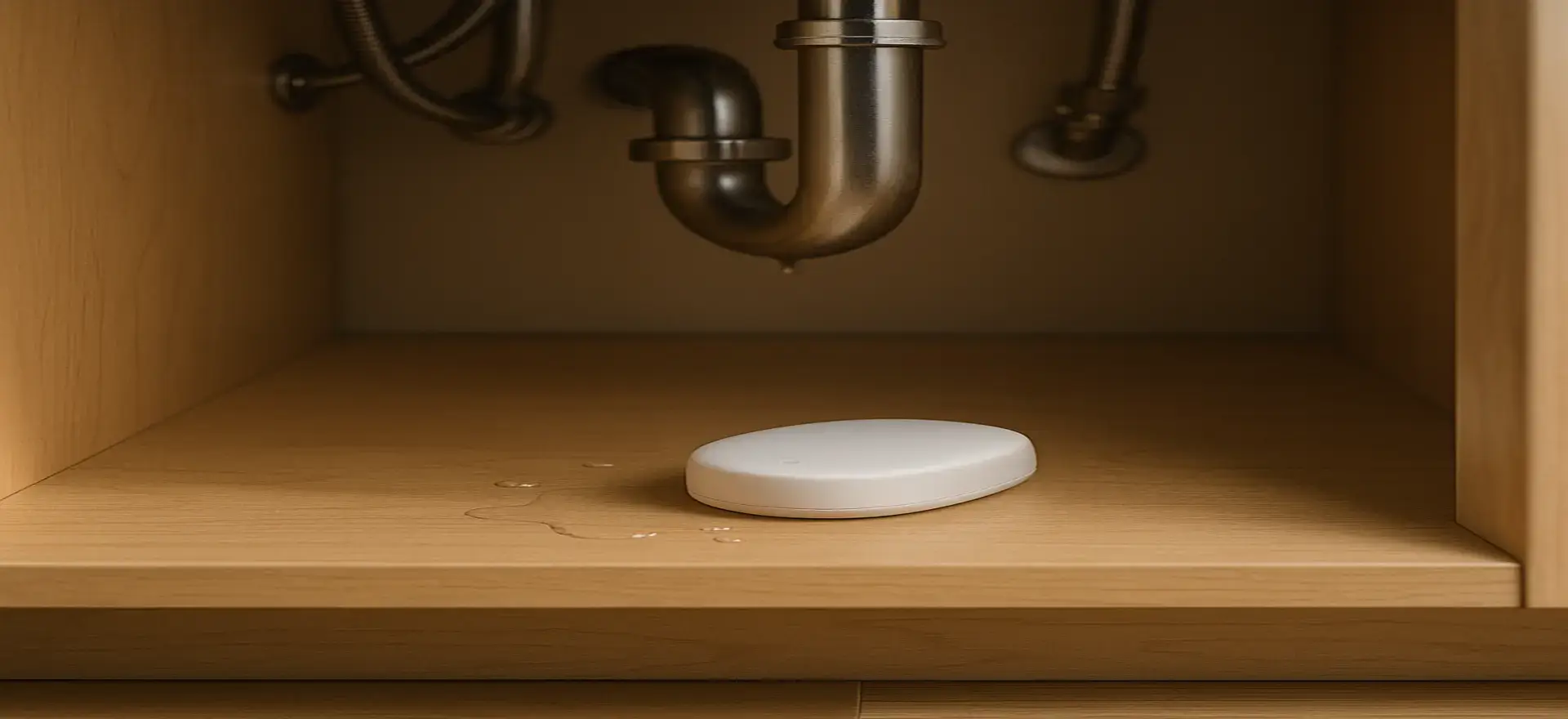
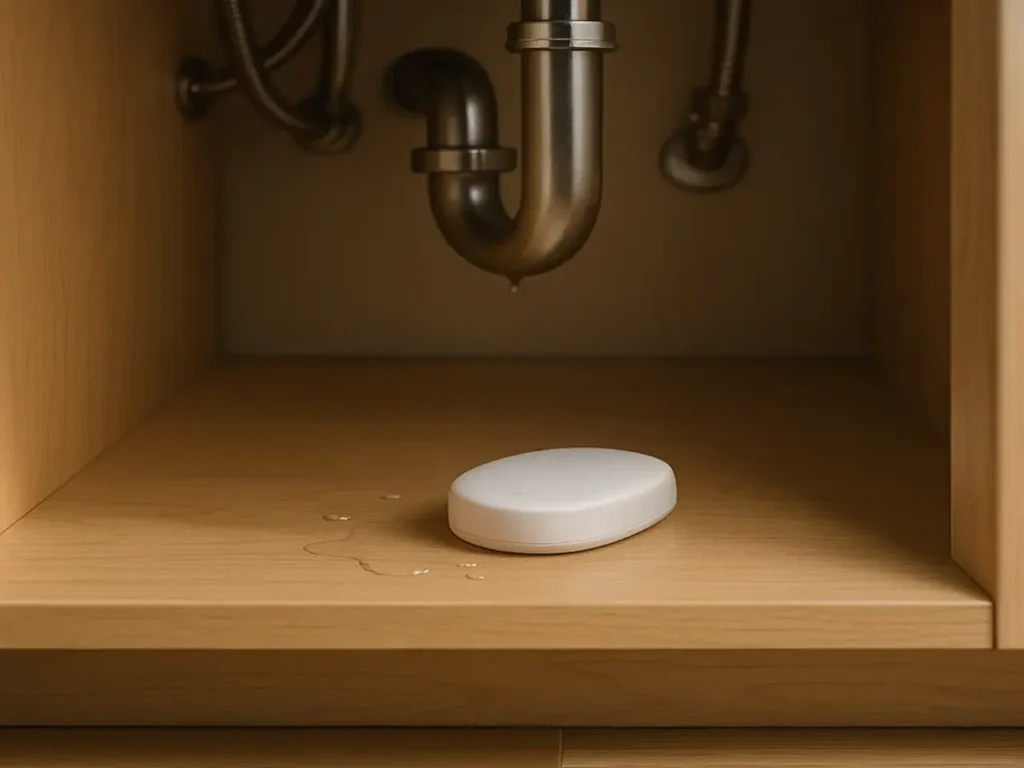
This image has been generated using AI for illustrative purposes only and does not represent an actual product image.
Govee Water Leak Detector vs. The Competition
vs. YoLink Water Leak Sensor (hub + LoRa)
Where YoLink shines: exceptional range and wall penetration for big homes or basements.
Why renters still lean Govee: no separate hub to mount, fewer boxes to explain to maintenance, and an easier “unpack-and-go” path for small apartments.
vs. Aqara Water Leak Sensor (hub + Zigbee)
Where Aqara shines: deep scenes if you already run a Zigbee hub and want whole-home automations.
Why renters still lean Govee: Wi-Fi keeps setup straightforward when you don’t control building hardware and can’t mount hubs. For a broad editorial comparison across brands, WIRED’s best water leak detectors summarizes performance and trade-offs in real homes.
Price & Accessibility
Where it fits in the market
The govee water leak detector three-pack is positioned as a budget-friendly kit that covers an apartment’s riskiest zones without extras. You typically get three sensors, a small gateway that connects to 2.4 GHz Wi-Fi, adjustable alarm volume, and room-by-room naming.
What renters should confirm before checkout
Wi-Fi: a 2.4 GHz network for the gateway.
Returns & warranty: make sure the return window lines up with your move-in schedule.
Batteries: stock the correct size so you’re never running to the corner store at midnight.
For current specs, supported Wi-Fi, and what’s included in the box, see the official Govee Wi-Fi Water Sensor 3-Pack page.
Apartment Placement Guide (Step-by-Step)
Kitchen sink (the highest-odds win)
Empty the cabinet base.
Dry-wipe the surface so the sensor sits flat.
Place the sensor directly below the P-trap or where supply lines enter.
Close the cabinet and run water for a minute.
Check the app to confirm the sensor shows as online and named “Kitchen Sink.”
Tiny extras that help
A thin plastic tray under the sensor stops cleaners or drips from wicking elsewhere.
If the cabinet base flexes, add a small coaster so the contacts touch evenly.
Washer closet (least forgiving failures)
Place the sensor near hose connections or where water would escape the pan.
Set phone alerts to “Critical” while you’re away.
If vibration causes false triggers, slide the sensor 2–3 cm away from splash zones.
Replacement timing
If hoses are older than five years, replace them. Sensors are great; prevention is better.
Bathroom base (slow leaks that get expensive)
Put the sensor where the toilet meets the floor or under the vanity’s P-trap.
Keep it slightly away from shower splash.
If your bathroom is tiny, angle the sensor so its contacts face the baseboard.
Stealth checks
If you smell mustiness, run your hand along the supply line and valve. A sensor catches the drip you might miss.
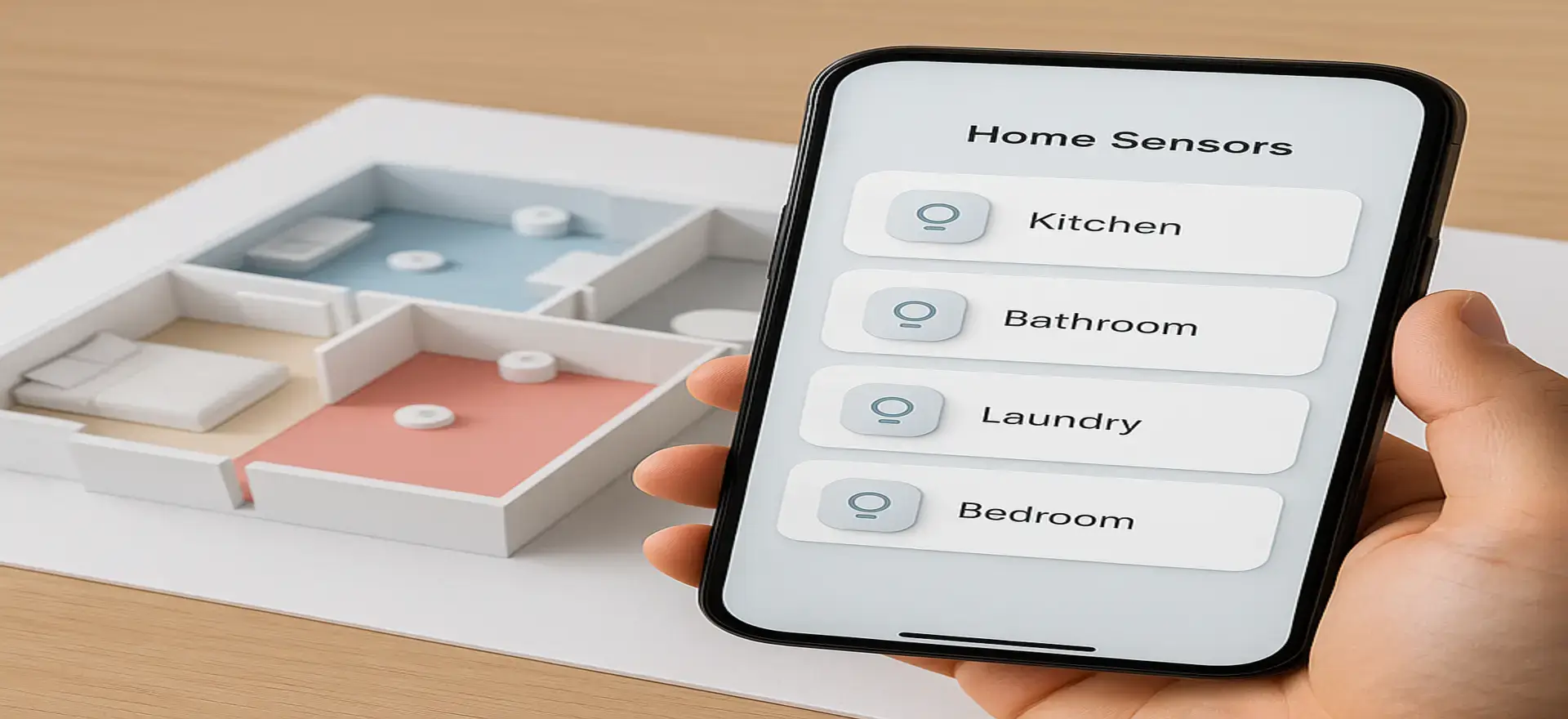
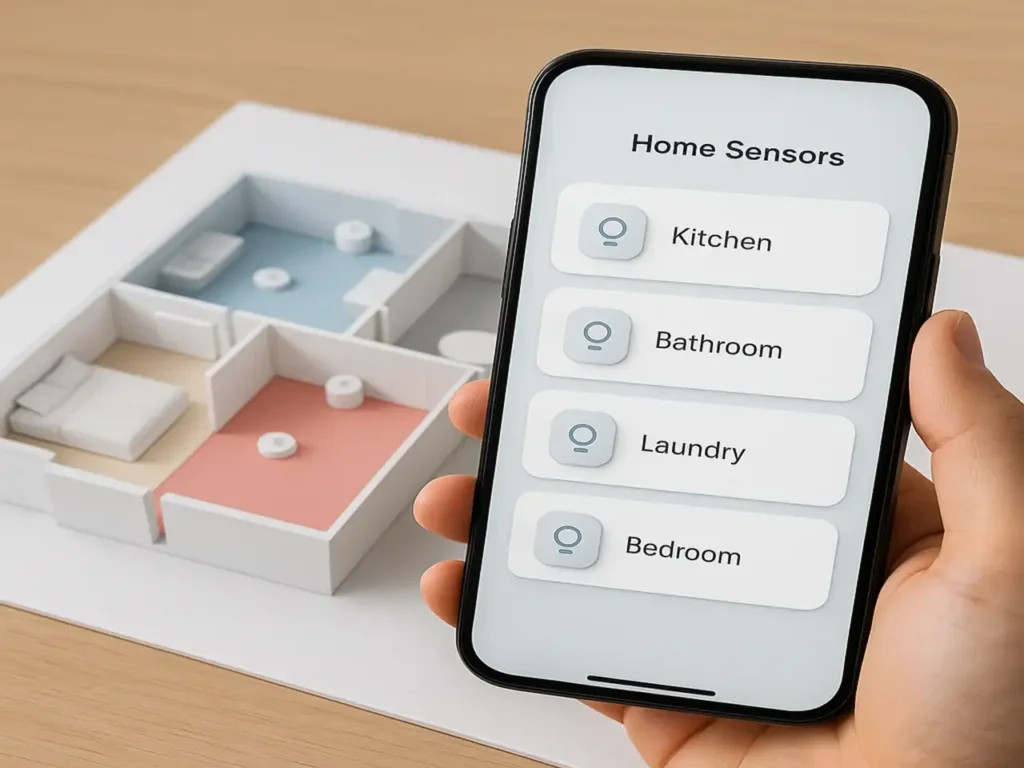
This image has been generated using AI for illustrative purposes only and does not represent an actual product image.
Renter-Proof Maintenance Plan
Monthly quick check
Open the app to confirm all sensors are online and battery levels are healthy.
Wipe contacts with a dry cloth.
Tap the test button (or use a teaspoon of water) to ensure alerts fire.
Before vacations
Replace any “low” battery.
Move sensors half a finger closer to fittings.
Toggle “Away” notifications so a leak on Saturday doesn’t become a Monday surprise.
When an alert happens
Silence the local alarm.
Snap photos of the leak and placement—those help with landlord conversations.
Shut off the nearest valve.
Dry the area, then monitor for re-trigger to confirm it’s resolved.
Pros and Cons
Pros
Zero-drill setup and fully reversible—landlord-friendly.
3-pack coverage matches kitchens, bathrooms, and washer closets.
Dual alerts (phone + local siren) work whether you’re home or away.
Portable—pack them on move-out and redeploy in minutes.
Clear app with room naming and quick battery checks.
Cons
Batteries to replace on a schedule.
Wi-Fi dependence—weak signal can delay alerts; place the gateway near the router.
Placement matters—bad positioning can miss a trickle or trigger on splashes.
Our Take for Renters
Damage spreads faster than permission. A govee water leak detector buys you time and proof—time to act while it’s still a towel job, and proof for your landlord that you didn’t ignore a leak. The three-pack covers the usual suspects without drilling or paperwork. If you need extreme range or already run a home-automation hub, YoLink or Aqara may edge it. For most apartments, Govee hits the sweet spot on simplicity, price, and deposit protection—and it fits neatly into a broader smart home for renters plan.
FAQ
Do I need an extra hub?
The small gateway in the kit handles Wi-Fi and talks to all included sensors. Nothing to mount on walls, which keeps landlords happy.
Will it work with my building’s Wi-Fi?
It’s designed for common 2.4 GHz networks. If your building uses a shared router or captive portal, set up near the router and keep sensors within range of the gateway.
How long do the batteries last?
Expect long-life, user-replaceable cells. Check levels monthly and swap them before long trips.
Where should I place each sensor?
Under the kitchen sink at the cabinet’s low point, beside the toilet’s shut-off valve or under the vanity P-trap, and near the washer hoses. If floors aren’t level, use a thin tray to guide water to the contacts.
Related posts:
- What Nobody Tells You About the Kasa HS103: Renter Review (2025) What Nobody Tells You About the Kasa HS103: Renter Review...
- Philips Hue A19 Review for Renters (2025): Still Worth the Hype? Philips Hue A19 Review for Renters (2025): Still Worth the...
- Wyze Cam v4 (2K): Renter-Friendly Security You Can Take When You Move Wyze Cam v4 (2K): Renter-Friendly Security You Can Take When...
- amazon echo dot: the ideal gadget for renters (2025 amazon echo dot: the ideal gadget for renters (2025) by...

